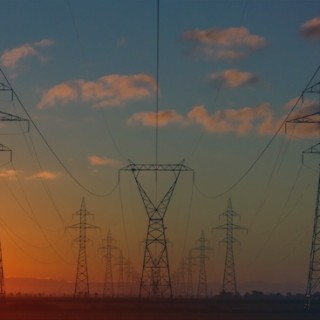Summer peaks like a boomerang
Insights
The functioning of the Polish power system in recent weeks has been very challenging. Further records of power demand are being set, although these were only expected in August, when the average temperature is highest and the water level in rivers is low. The situation is better than in the critical year 2015, but the dispersed sources appearing in the system, especially PV, are not yet optimally exploited. We need to learn how to use them.

On 26 June at 13:15 the highest power demand in history was recorded in Poland during the summer peak: 24 144 MW. Due to climate change and the record-breaking temperatures for this month, a new phenomenon of the "June summer peak" is emerging, although formally this year's first records were set even before the start of the calendar summer. What was the situation like at that time in the National Power System (NPS)?
1. Poland is secured with record high energy imports. On the synchronous interconnection (including Germany, the Czech Republic and Slovakia), imports amounted to nearly 1,300 MW, and in total (including connections with Sweden, Lithuania and Ukraine) to over 2,600 MW. These values are close to the maximum import capacity.
2. Despite the increasing failure rate of conventional units[1], the unplanned deficits (resulting from weather conditions) on 26 June were minor. During the peak period, they amounted to approx. 300 MW in the units in Pątnów 2, Dolna Odra and Opole. This situation increases security of supply, unlike in August 2015, when all the unplanned deficits reached even 3.5 GW.
3. Since the beginning of the year, the installed capacity of photovoltaic installations has been growing rapidly. Currently it is already over 700 MW compared to 500 MW in 2018. It is estimated that by the end of this year their capacity will reach even 1.5 GW[2]. This is a positive development because of the high correlation between the production of solar energy sources and the summer peak demand. However, since photovoltaic power plants are not connected to the transmission grid, their production is "invisible" to the operator. That means that:
- in order to manage the PV potential, it is becoming necessary to take into account the forecasts of photovoltaic production at the level of the transmission system operator, on which PSE is currently working;
- the trend that a growing amount of electricity is produced at the level of distribution networks is becoming more and more evident. Therefore, it is necessary to continue supporting solutions allowing for the use of dispersed resources to regulate the NPS. This will reduce costs and increase the efficiency of the balancing system;
- in fact, peak demand for power would be even higher if we do not count in self-generated power production, not only from solar energy sources, which escapes statistics. The transition to a more decentralised system is happening right before our eyes.
4. For several hours, prices on the balancing market, which balances the electricity generated in the NPS with the demand for electricity, were quite high - above 500 PLN/MWh. At 12:00 p.m., the price reached even the level of 980 PLN/MWh. This increase may be due to the small margins of the operational reserve capacity. On that date many units with a total capacity of approximately 5 GW were not available due to repairs.
This year's hot June confirms that meeting the demand for capacity in summer remains the biggest challenge for the Polish power system. The topic returns like a boomerang, but at the same time two additional tendencies appear more and more strongly. First of all, the import of electricity in Poland also has record values and is critical for the safety of the National Power System. Secondly, the share of photovoltaics, which covers part of peak demand for power on such sunny days, is increasing. So the more PV we have, the less problems we will have with summer peaks, and maybe 26 June is one of the last days of this kind. It is certainly necessary now to adapt the regulations so as to make the best possible use of new, increasingly dispersed resources. It is also high time to address the issue of energy efficiency.
Authors: dr Aleksandra Gawlikowska-Fyk and Rafał Macuk
Date of publication: 28 June 2019
1. Ref. J. Maćkowiak-Pandera, How do we deal with summer peaks? Changes after the crisis in 2015, Forum Energii, 2018.
2. A. Więcka, J. Zarzeczna, Rynek fotowoltaiki w Polsce, Instytut Energetyki Odnawialnej, 2019.

